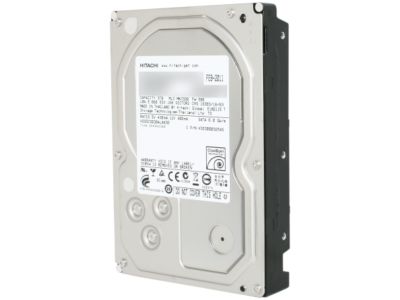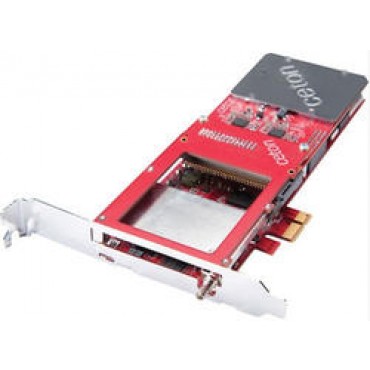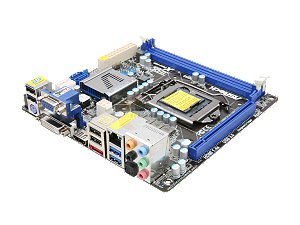Holiday 2011 Mainstream High-End Buyer's Guide
by Zach Throckmorton on December 9, 2011 12:00 AM EST- Posted in
- Guides
- AMD
- Intel
- Sandy Bridge
- CrossFire
- Sandy Bridge E
- Holiday 2011
- NVIDIA
Cinematastic SFF HTPC
I covered small form factor home theater PCs in May, offering both Intel- and AMD-based systems. Both of those rigs came in well under $1000. This guide's HTPC is substantially more capable in every regard, with a price tag to show for it. This SFF HTPC has four primary considerations in mind with its design: video transcoding capability, plenty of storage space for a large media library, Blu-ray playback, and finally the ability to serve as a cable box DVR replacement.
The best video transcoding CPU available on the mainstream market today is without a doubt the Intel Core i7-2600K. You can check out AnandTech's Bench for a good idea of how this chip performs in a wide variety of tasks. Further, Anand thoroughly reviewed the CPU at the start of 2011 upon its launch. It is important to note that the i7-2600K is total overkill for simple HD media playback—that can be accomplished easily by a CPU costing less than $100. Thus, this HTPC is capable of not just media playback, but extremely fast media encoding/transcoding as well.

The tragic flooding throughout southeast Asia, particularly Thailand, has caused a severe disruption of the global hard drive supply chain. It is a bad time to invest in many high capacity hard drives, but if you want to build a computer that can store terabytes of files, you have little choice. Unfortunately, we do not yet know when hard drive prices will return to their pre-flood levels, though it will likely be months from now. Therefore we're dropping over $500 on 6TB of mass storage in the form of two Hitachi HDDs. It's difficult to pay that much for drives that were half that price only months ago, so if you can put off buying lots of storage for several months, you should considering doing so.

As for Blu-ray playback and cable box DVR replacement, we're going with a standard LITE-ON Blu-ray burner that supports 3D BR-Ds and a Ceton InfiniTV quad-tuner. The Blu-ray burner costs about twice as much as Blu-ray readers, so if you are not interested in burning BR-Ds, you can save some money by foregoing that capability. Note that this is an OEM drive—you will have to purchase appropriate software or use a freeware application with it. (My personal favorite freeware BR-D player is Media Player Classic - Home Cinema, but there are others that also work well.) The Ceton InfiniTV essentially acts as a replacement for four cable boxes, allowing you to view and/or record up to four HD cable programs simultaneously. This is a very powerful card when combined with a LAN. It can certainly serve as a centralized multistream HD cable player for an entire household, and it works without issue with Windows 7's Media Center.

We've selected ASRock's Z68M-ITX/HT mini-ITX motherboard to tie all of the components together. This is a very feature-rich ITX board that includes both HDMI out as well as DVI and optical S/PDIF interfaces. As it is a Z68-chipset board, it also supports the i7-2600K's impressive overclocking abilities. The only real limitation of the board is its sole PCIe x16 lane. The Ceton tuner card uses a PCIe x1 interface, which can be up-plugged without issue into the ASRock board. However, if the Ceton tuner is in place, there are no additional expansion slots—and with only four SATA ports, you are limited to four total SATA devices. In this case, the Blu-ray drive, an SSD boot and application drive, and two mass storage HDDs.
For the SSD, we're recommending Crucial's M4 128GB SATA III drive. These drives have a reputation for reliability and while not the fastest SSDs, they fare quite well against the competition. We're opting for a 128GB capacity SSD primarily to accomodate potentially large video encoding software suites, like Adobe's CS5.5 Master Collection. If you don't need as much space for your OS and application drive, you can save about $100 by going with the 64GB variant.
Because the ITX board has only two DDR3 slots, we're limited to 8GB (a single 2x4GB kit) unless you're interested in spending substantially more money on a 2x8GB kit of DDR3. For example, CS5.5 can frequently eat more than 8GB of RAM when I'm transcoding HD video, but whether a 16GB kit is worth more than a $100+ cost increase compared to an 8GB kit will depend on your particular software usage.

Powering everything we have Silverstone's Strider Plus ST50F-P PSU. This model is one of the smallest ATX power supplies, and its full modularity cuts down on cable clutter. You can read more about this excellent PSU in Martin's recent review. Finally, housing all of these components is Lian-Li's venerable PC-Q08A. This has proven to be my favorite ITX case for a number of reasons. First, I think it looks very nice. Second, the combination of the 140mm front intake fan and 120mm top exhaust fan means it runs cool for an ITX box. It is somewhat large for an ITX chassis so stuffing all of these components into it will be challenging (as all ITX builds are) but not maddeningly difficult (as some ITX builds can be, especially for those of us with larger hands). Don't worry—the stock i7-2600K CPU cooler clears the bottom of the PSU with some headroom to spare in the PC-Q08A. Finally, it should be noted that the PC-Q08 is available in black and red as well as the silver chassis in the list below.
| Component | Product | Price |
| CPU | Intel Core i7-2600K | $320 |
| Motherboard | ASRock Z68M-ITX/HT | $120 |
| RAM | Crucial 8GB (2x4GB) DDR3 1333 | $40 |
| SSD | Crucial M4 128GB | $210 |
| HDDs | (2) Hitachi Deskstar 3TB 5400rpm | $520 (total) |
| TV tuner card | Ceton InfiniTV Quad-tuner | $294 |
| Optical drive | LITE-ON IHBS112-29 | $100 |
| Power supply | Silverstone Strider Plus ST50FP-P 500W | $80 |
| Case | Lian-Li PC-Q08 | $110 |
| Operating system | Microsoft Windows 7 Home Premium 64-bit (OEM) | $100 |
| Total: | $1894 | |
If you're more interested in using your PC to play video games than movies, we have a system for you on the next page.










52 Comments
View All Comments
piroroadkill - Friday, December 9, 2011 - link
Mine's pretty similar :3i5-2500K
Asus P8Z68-V Pro
Corsair A70
Seasonic X-660
Fractal Design Define R3
8GB Patriot G2
Also, MSI Twin Frozr III Radeon 6950 (which unlocked to 1536 shaders)
87_heavyboy - Friday, December 9, 2011 - link
The ASRock Z68M-ITX/HT looks nice at first glance, so I bought it, too. Together with the i7 2600K. I also thought "great, m-ITX + overclocking - something for the future". In practice, it has its problems. The mosfets don't have coolers on them, they get hot quite fast, resulting in throttling. The board can't hold 3.4 GHz for some minutes during compilation :( I did not even think about overclocking!The other problem: It supports Overclocking but no undervolting. SNB comes with quite defensive default-voltage, resulting in good undervolting-potential.
Positive:
It pulls just ~30W at idle.
I think, it would have been a better choice to go mATX, if it should be a smaller PC.
duploxxx - Friday, December 9, 2011 - link
this HTPC design is a huge waste of moneyMrTeal - Friday, December 9, 2011 - link
I was curious about that too.My HTPC is a low power, quiet affair with an X3, a modded and silent 5570 and an SSD, no mechanical HDD. Any encoding I do on my main rig so that my HTPC stays low power and silent, and just stream the data over the network.
Do many people really build powerful and expensive HTPCs? I find usingmine as a PC @ 1080p/47" is kind of a poor experience when you're sitting at normal TV viewing distances, so all I really use mine for is a media streamer and checking scores / watching Youtube. Any real computing I just do at my desktop. I'd be interested in how other people use these HTPCs.
Z Throckmorton - Friday, December 9, 2011 - link
Generally speaking, an AMD E-350 setup is sufficient for the majority of HTPC usage scenarios. However, I have built a few more powerful HTPCs for people who want to transcode video but don't want their primary home computer tasked as a video editor, and don't want to bother with a LAN.Death666Angel - Friday, December 9, 2011 - link
That is bollocks. They clearly state they are not going with a traditional HTPC setup (i.e. just be able to play back everything). They want performance for coding, HDTV streaming capabilities and storage as well. If people are in the market for that and have the cash, there is nothing I would really see being done to bring down the price while maintaining the performance.I personally have a small media client and a large file server in the back and I'm not interested in HDTV stuff. I came away spending about 400€.
piroroadkill - Friday, December 9, 2011 - link
I wouldn't recommend them, anymore. I've seen my 2GB Radeon 6950 use more than 1GB with GPU-Z open on another screen. For the slight extra cost, and the chance of unlocking (mine did, and it's not so old), 2GB 6950 all the way, all the time.prdola0 - Friday, December 9, 2011 - link
Zach, wouldn't it be better to use 2x non-reference GTX560Ti in SLI instead of 2x HD6950? There is quite a lot of GTX560Ti models clocked ~15% higher than the reference card, which matches even the HD6970 performance. They are both more price-efficient than HD6950 and also SLI tends to be more stable (you usually don't see negative scaling and similar problems). Of course there is also the added value of Nvidia actually supporting gamers, unlike AMD. The Skyrim graphics setup guide they just recently released is simply great and most other GeForce.com articles are helpful just as much.Take care,
Prdola
Death666Angel - Friday, December 9, 2011 - link
Hm....According to the bench, SLI 560TI and CF HD6950 trade blows the whole time except for Civ5 where nVidia clearly wins or anything above 1920x1200 where AMD clearly wins.
If you go with SLI/CF, gaming at 1920x1200 is moronic anyway, so I think it is very valid to recommend HD6950 over the 560TI. Also, most recent reviews of CF/SLI I have seen have them nearly on par, with nVidia leading in a few games and AMD in others. It is not a situation like two years ago where nVidia had a clear lead. And speaking for my market, there really is no difference between HD6950 and 560TI cards. You can find both at pretty much the same price points.
So, to summarize: to each his own, every company has great cards for good prices. Look at your usage pattern and a special deal, then decide. :-)
prdola0 - Monday, December 12, 2011 - link
That's hardly so. I am talking about overclocked editions of GTX560Ti. In this regard the GTX560Ti is almost as easily over-clockable as GTX460 was. And there are almost as many 560Ti non-reference OC models. And those editions trade blows with HD6970, yet are priced at HD6950 mark or some between HD6950 and HD6970.